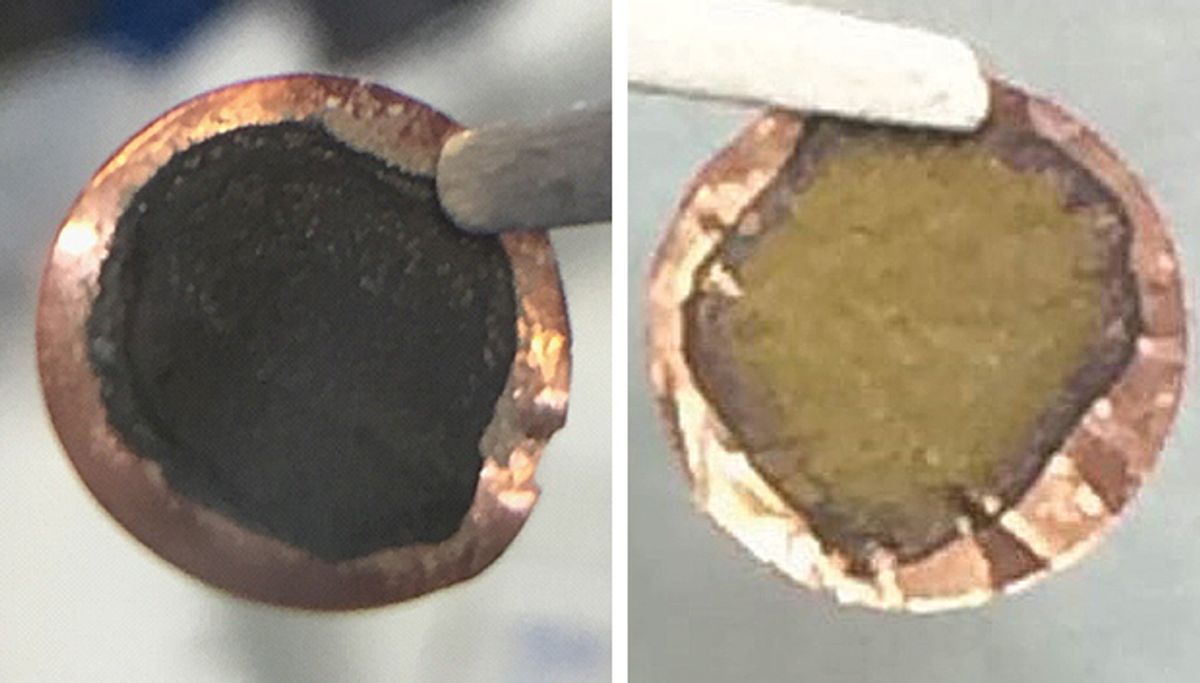Various nanomaterials have been drafted into the quest to improve the charge capacity of anodes (negative electrodes) in lithium-ion batteries. Their role primarily has been to help silicon—which offers ten times the charge capacity of graphite—last more than just a few charge/discharge cycles. Everything from graphene to nanofibers have been enlisted into help silicon better survive the rigors of the expansion and then contraction that occurs when silicon anodes are charged and discharged.
Now scientists at Columbia University have developed a nanostructure for the silicon anode of Li-ion batteries that will help them overcome one of their most challenging moments: the very first charge/discharge cycle that occurs during manufacturing.
It is in the manufacturing process of Li-ion batteries where the batteries first lose their energy capacity. After a Li-ion battery is first produced, it is goes through its first charge/discharge cycle so that part of its liquid electrolyte is reduced to a solid and that coat the anode of the battery. This process irreversibly depletes the amount of energy a battery can store by 10 percent for regular anodes but as much as 20 to 30 percent for next-generation silicon-based anodes.
“Through our design, we've been able to gain back this loss, and we think our method has great potential to increase the operation time of batteries for portable electronics and electrical vehicles,” said Yuan Yang, an assistant professor at Columbia, in a press release.
In research described in the journal Nano Letters, Yang and colleagues fabricated a three-layer structure for the anode consisting of silicon, lithium, and a polymer coating called PMMA (Polymethyl methacrylate). PMMA remains stable even in ambient air, providing a longer lasting battery that is cheaper to manufacture.
The battery industry has traditionally dealt with the problem of energy loss during the first charge/discharge cycles by adding more lithium-rich materials to the electrode. However, this was problematic because these materials are not stable in ambient air. In order to create conditions in which lithium-rich materials would not react to the moisture in the air, industry would create perfectly dry environments, which increased manufacturing costs.
The new tri-layered electrode structure developed by the Columbia researchers uses the PMMA to ensure that the lithium is not exposed to ambient air or moisture. The polymer layer is covered with an active material that can be artificial graphite or silicon nanoparticles. The polymer layer then dissolves in the electrolyte of the battery, which then exposes the lithium to the electrode.
“This way we were able to avoid any contact with air between unstable lithium and a lithiated electrode,” Yang explained. “So the trilayer-structured electrode can be operated in ambient air. This could be an attractive advance towards mass production of lithiated battery electrodes.”
The measured effects of this tri-layered structure for the manufacturing process are pretty striking. In state-of-the-art graphite electrodes the loss of capacity went down from 8 percent to 0.3 percent. The impact is even more dramatic in silicon-based anodes where the loss of capacity went from 13 percent to minus 15 percent, meaning that the electrode had more lithium than it actually needed. This extra bit of lithium comes in handy later in the batteries life after many charge/discharge cycles.
In continued research, Yang and his Columbia colleagues are looking to make the polymer layer even thinner and in so doing take up less room in the battery. The researchers are also looking at ways that they can scale up the technique.
Dexter Johnson is a contributing editor at IEEE Spectrum, with a focus on nanotechnology.



